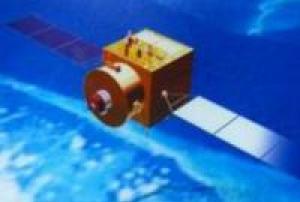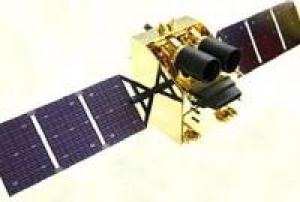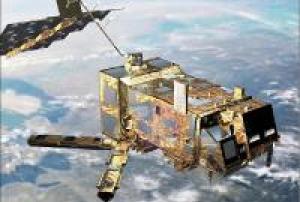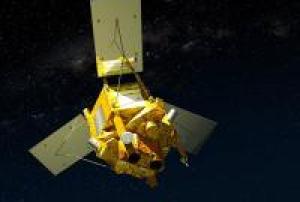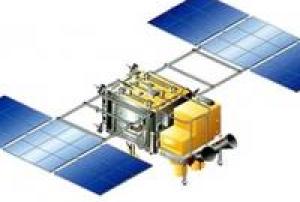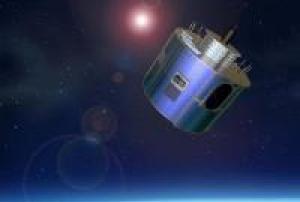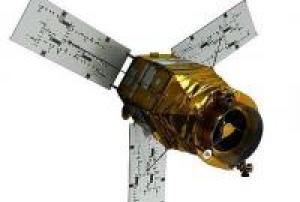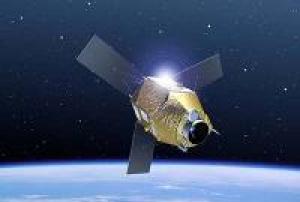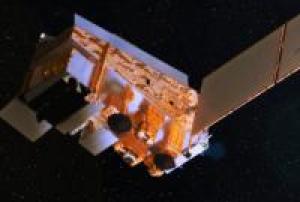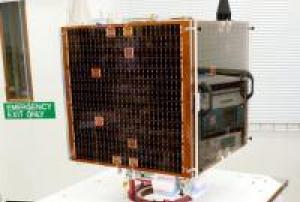Drought
Definition
Facts and figures
Further information
UN-SPIDER Regional Support Offices with hazard-specific expertise
Related content on the Knowledge Portal
SJ-9 (Shi Jian = Practice) is a technology demonstration formation flight mission of CNSA (China National Space Administration), consisting of two minisatellites of different sizes and capabilities, SJ-9A and SJ-9B. The overall mission concept is to demonstrate the functionality of a range of newly developed formation flying techniques and components and to validate the formation flight GNC (Guidance, Navigation and Control) algorithms and strategies of the system configuration.
SJ 9A is based on the CAST-2000 bus. It conducts in-orbit experiments for electric propulsion, high-precision- and high-stability control systems, high-efficienent power supply and advanced thermal control technology. The satellite features also instruments for Earth observation and component tests of indigenously developed technology.Instruments: High-performance small camera
read more
- integrated panchromatic and multispectral design
- swath width: 30km
-…14/10/2012VRSS-1 is Venezuela's first remote sensing satellite.
read more
On May 26, 2011, a contract for the manufacture and launch of the VRSS-1 spacecraft was signed in Caracas, Venezuela, between the government of Venezuela (the Ministry of People’s Power for Science, Technology and Intermediate Industries) and CGWIC (China Great Wall Industry Corporation), a subsidiary of CASC (China Aerospace Science & Technology Corporation).
After launch, the VRSS-1 satellite was renamed in honor of Sebastián Francisco de Miranda (1750-1816), a Venezuelan revolutionary hero, known as ‘Generalissimo’ Francisco de Miranda, who had planned the independence of the Spanish colonies in South America.
Partner organizations in the VRSS-1 program: ABAE is the Space Agency of Venezuela, subordinated and funded by the Venezuelan Ministry of People’s Power for Science, Technology and Innovation (MPPCTI). ABAE is in charge of in-orbit operations, management and application of…20/09/2012METOP (Meteorological Operational) is Europe's first polar-orbiting operational meteorological satellite. It is the European contribution to the Initial Joint Polar System (IJPS), a co-operative agreement between Eumetsat and the US National Oceanic and Atmospheric Administration (NOAA) to provide data for climate and environmental monitoring and improved weather forecasting.
Metop-A (launched on 19 October 2006), Metop-B (launched on 17 September 2012) and Metop-C (launched 7 November 2018) are in a lower polar orbit, at an altitude of 817 kilometres, to provide more detailed observations of the global atmosphere, oceans and continents. The three satellites will operate in unison for as long as Metop-A's available capacities bring benefits to users. NOAA still continues to operate its mid-afternoon orbit satellite service as part of the Polar Orbit Enviromental Satellites (POES) system.Instruments:
read more
A/DCS (Advanced Data Collection System)…17/09/2012SPOT-6 (Système Pour l’Observation de la Terre) is an optical satellite built by Astrium and was successfully launched on September 9, 2012 with SPOT 7 launched on June 30, 2014.
read more
The new generation SPOT-6 and 7 optical satellites feature technological improvements and advanced system performance allowing continuity in the SPOT constellation through to 2024. It is capable of imaging the Earth with a resolution of 1.5 meter panchromatic and 6 meter multispectral (blue, green, red, near-IR) and will offer imaging products to customers in defense, agriculture, deforestation, environmental monitoring, coastal surveillance, engineering, oil, gas and mining industries.
The ability to respond accordingly to changing weather conditions, a reduced timeline for urgent tasking requests and an acquisition capacity of 3 million sq km per satellite shows an increased data capacity and simplified data access, major improvements in this generation of SPOT satellites.
SPOT-6 and…09/09/2012Kanopus-V (also spelling of Canopus-V N1) is an Earth observation minisatellite mission of the Russian Space Agency, Roskosmos and ROSHYDROMET/Planeta. The overall objective is to monitor Earth's surface, the atmosphere, ionosphere, and magnetosphere to detect and study the probability of strong earthquake occurrence.
Essentially, it would be an imaging satellite designed to photograph the Earth surface with a resolution of 2.1 meters and a swath of 20 kilometers with its panchromatic camera and a resolution of 10.5 meters and a swath of 41 kilometers with a multispectral camera. Resulting images could be used for cartography, agricultural planning and similar applications.The Kanopus-V-N1 spacecraft was launched on July 22, 2012 on a Soyuz FG/Fregat vehicle from the Baikonur Cosmodrome, Kazakhstan. The launch provider was Starsem.
Instruments:
read more
PSS (Panchromatic Imaging System)
MSS (Multispectral Imaging System)
MSU-200 (…22/07/2012Today, weather satellites scan the whole Earth, meaning not a single tropical storm or severe weather system goes undetected. The early detection and warnings they provide have saved thousands of lives.
Meteosat data is of unique value to nowcasting of high impact weather in support of safety of life and property.
It has been shown to improve weather forecasts and severe weather warnings which, in turn helps limit damage to property and benefits industry e.g. transport, agriculture and energy.
Meteosat-10 provides the Rapid Scanning Service, delivering more frequent images every five minutes over parts of Europe, Africa and adjacent seas. It also provides Search and Rescue monitoring.Instruments:
read more
GERB (Geostationary Earth Radiation Budget)
MSG Comms (Communications Package for MSG)
SEVIRI (Spinning Enhanced Visible and Infra-Red Imager)
05/07/2012KOMPSAT-3 is an optical high-resolution Korean observation mission of KARI (Korea Aerospace Research Institute). The mission is funded by MEST (Ministry of Education, Science and Technology). The project was started in 2004. The objective is to provide observation continuity from the KOMPSAT-1 and KOMPSAT-2 missions to meet the nation's needs for high-resolution optical imagery required for GIS (Geographical Information Systems) and other environmental, agricultural and oceanographic monitoring applications.
A further goal is to meet the nation's satellite demand and form a technology infrastructure that will make inroads into the world space industry at a stage when the industry is improving the capability to design and develop highly advanced remote sensing satellites.
Instrument: AEISS (Advanced Electronic Image Scanning System)
read more
- 5 spectral…18/05/2012Launched in December 2011, Pleiades is a constellation of two very-high-resolution satellites capable of acquiring imagery of any point on the globe in under 24 hours for civil and military users.
read more
Pleiades has been observing and mapping Earth’s surface at a resolution of just 70 cm every day since December 2011. Comprising the Pleiades 1A and Pleiades 1B satellites, this space imaging system complements the capabilities of the SPOT satellites, which have a wider field of view than Pleiades but lower spatial resolution. What’s more, as Pleiades 1A and 1B are in the same orbit, together they can image anywhere on Earth in less than 24 hours. Pleiades imagery is used for both civil and military applications, for example to track urban expansion, monitor the planet’s active volcanoes or assist road and railway routing, and to locate adversaries’ military installations for mission planning. Pleiades’ key asset is an extremely sensitive optical…17/12/2011The NPOESS Preparatory Project (NPP) was renamed to Suomi National Polar-orbiting Partnership (Suomi NPP) in honor of Verner E. Suomi, University of Wisconsin meteorologist, widely recognized as the "Father of Satellite Meteorology."
Launched from California’s Vandenberg Air Force Base a board a Delta-II Mission Launch Vehicle in October 2011, Suomi NPP is the predecessor to the JPSS series spacecraft and is considered the bridge between NOAA's legacy polar satellite fleet, NASA's Earth observing missions and the JPSS constellation. Suomi NPP was constructed with a design life of five years (although it’s still functioning normally).and carries five state-of-the-art instruments: (1) VIIRS, (2) CrIS, (3) ATMS, (4) OMPS, and (5) CERES FM5.
Instruments:
read more
VIIRS (Visible/Infrared Imager and Radiometer Suite)
CrIS (Cross Track Infrared Sounder)
ATMS (Advanced Technology Microwave Sounder)
OMPS (…28/10/2011NASRDA (National Space Research & Development Agency) of Abuja, Nigeria has continued its association with SSTL, with two parallel projects - the NX and NigeriaSat-2. Like NigeriaSat-1, NX is based on the SSTL-100, but is being developed by a team of 26 Nigerian trainee engineers at SSTL's facilities in England. The Nigerian engineers will completely manage the total lifecycle of the NX and will be responsible for the delivery of the satellite to full flight specification.
read more
Capacity building is central to the implementation of the Nigeria Space Program. As part of the Know-How Technology Training (KHTT) on the NigeriaSat-2 satellite project is the development of a training model (TM) named NigeriaSat-X. The TM will be used to give the KHTT’s hands on experience in the requirements specification, project management, system engineering, manufacture, test, assembly / integration and final system testing of a spacecraft. Unlike the…17/08/2011

